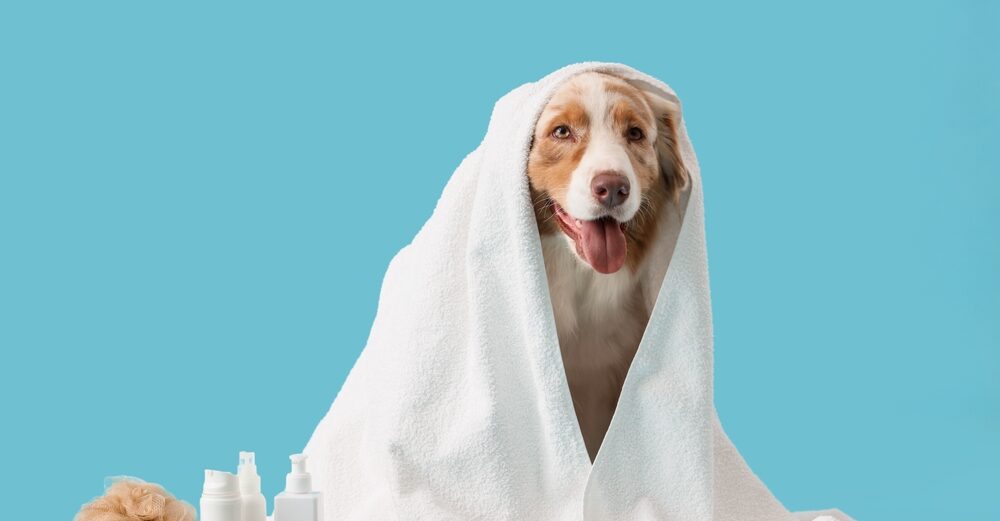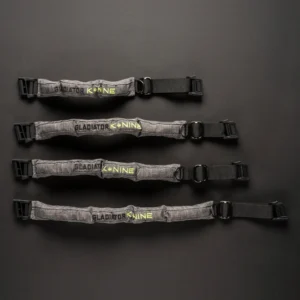August 31, 2024
Understanding and Relieving Canine Anxiety
If you’re looking for canine anxiety relief, you’re not alone. Many dogs experience anxiety, which can lead to destructive behavior, stress, and even health problems. Fortunately, there are effective ways to help your dog feel better.
Here are some quick tips for canine anxiety relief:
- Exercise regularly: Helps reduce excess energy and stress.
- Offer physical contact: Cuddling and petting can be very soothing.
- Use massage: Eases muscle tension and anxiety.
- Try music therapy: Calming music can reduce stress.
- Provide a time-out: Create a quiet, safe space for your dog.
Canine anxiety is more common than you might think. Anxiety in dogs can stem from various causes such as fear, separation, and changes in their environment. Symptoms include excessive barking, pacing, trembling, and destructive behavior.
By recognizing these signs early and understanding their causes, you can take steps to alleviate your dog’s anxiety and improve their overall well-being.
Understanding Canine Anxiety
Anxiety in dogs is a common issue that can affect any breed. It can be triggered by various factors and can manifest in different ways. Understanding the causes and symptoms of anxiety in dogs is crucial for providing effective relief.
Common Causes of Canine Anxiety
Fear-Related Anxiety: Dogs can develop anxiety from loud noises (like fireworks or thunderstorms), unfamiliar people or animals, and new environments. For instance, a dog might become anxious during a visit to the vet or when encountering new surfaces like grass or wood floors.
Separation Anxiety: This type of anxiety affects about 14% of dogs. It occurs when dogs are left alone or separated from their family members. Symptoms include urinating or defecating in the house, destructive behavior, and excessive barking. Dogs with separation anxiety often cannot find comfort when left alone.
Age-Related Anxiety: Older dogs can develop anxiety due to cognitive dysfunction syndrome (CDS). This condition is similar to Alzheimer’s disease in humans and leads to confusion and anxiety. Dogs with CDS may show signs of memory loss and decreased awareness, contributing to their anxiety.
Recognizing Symptoms of Anxiety in Dogs
Identifying anxiety in dogs involves looking for specific symptoms. Here are some common signs:
- Aggression: This is a serious symptom and can be directed towards people or other animals. It can also be indirect, such as when a person comes between the dog and the source of its aggression.
- Urinating or Defecating Indoors: Even house-trained dogs may have accidents inside the house due to anxiety.
- Drooling and Panting: These can be signs of stress, especially if they occur in situations where the dog is usually calm.
- Destructive Behavior: Dogs might chew on furniture or try to escape through doors or windows, risking injury.
- Depression: An anxious dog might lose interest in activities they usually enjoy.
- Excessive Barking: This can be a sign of stress, especially if it occurs when the dog is alone.
- Pacing and Restlessness: Dogs may walk back and forth or be unable to settle down.
- Repetitive or Compulsive Behaviors: Actions like excessive licking or chewing on themselves can lead to sore spots and further stress.
Understanding these symptoms and their triggers can help you take the first steps towards canine anxiety relief.
Next, we’ll explore one simple way to provide effective relief for your dog’s anxiety.
One Simple Way to Provide Canine Anxiety Relief
The Role of SemiCera® Technology
One effective way to provide canine anxiety relief is by using the Gladiator K-Nine Collar. This collar employs advanced SemiCera® technology, which is a non-invasive and medication-free solution designed to help dogs manage anxiety and stress.
The collar works by using your dog’s body heat to activate ceramic emitters embedded within the collar. These emitters gently stimulate the cerebellum, a part of the brain crucial for emotional regulation. This continuous, gentle stimulation promotes relaxation and reduces stress, offering a natural and safe way to manage anxiety.
SemiCera® technology provides continuous therapy, ensuring that your dog receives ongoing benefits without the need for constant intervention. Whether your dog suffers from separation anxiety, fear of loud noises, or other stressors, the Gladiator K-Nine Collar can make a significant difference in their well-being.
How to Use the Therapy Collar
Using the Gladiator K-Nine Collar is straightforward and safe. Here’s how to get started:
- Application: Simply fasten the collar around your dog’s neck, ensuring it’s snug but not too tight. The collar should fit comfortably, allowing two fingers to slide easily between the collar and the dog’s neck.
- Duration: The collar is designed for continuous wear. For best results, your dog should wear the collar throughout the day and night. This ensures that the therapeutic benefits are consistent and ongoing.
- Safety: The Gladiator K-Nine Collar is safe for all dogs. It’s non-invasive and doesn’t rely on medication, making it an ideal choice for dogs with sensitivities or those already on other treatments. Always monitor your dog for any signs of discomfort or irritation, and consult your veterinarian if you have any concerns.
- Effectiveness: Many dog owners report noticeable improvements in their pets’ anxiety symptoms within days of using the collar. Consistent use over weeks and months can lead to even more significant reductions in anxiety-related behaviors.
Case Study: Arielle Carey’s dog, Odin, experienced severe anxiety around unfamiliar people and dogs. After trying various solutions, Carey found that using a therapeutic collar made a substantial difference. Odin became much calmer and more relaxed, significantly improving his quality of life and reducing stress for both him and his owner.
Statistics: In a recent survey, 57% of dog owners reported that their pets experience anxiety, and many have found relief through non-invasive products like the Gladiator K-Nine Collar (source).
By using the Gladiator K-Nine Collar, you’re not just addressing your dog’s anxiety symptoms—you’re investing in a happier, healthier future for your furry friend. This simple yet powerful tool can transform your dog’s anxiety into calm and composure, offering continuous and safe therapy custom to their needs.
Next, we’ll explore additional tips for managing canine anxiety, including exercise, physical contact, and alternative therapies.
Additional Tips for Managing Canine Anxiety
While the Gladiator K-Nine Collar is a fantastic tool for canine anxiety relief, incorporating additional strategies can enhance your dog’s calmness and security.
Exercise
Exercise is crucial for reducing anxiety in dogs. Regular physical activity helps burn off excess energy, which can otherwise contribute to anxiety.
- Daily Walks: A simple walk can do wonders. Try to incorporate at least 30 minutes of walking each day.
- Playtime: Games like fetch or tug-of-war are not only fun but also mentally stimulating.
- Interactive Toys: Puzzle toys can keep your dog’s mind occupied and reduce anxiety.
Physical Contact
Physical contact can be incredibly soothing for an anxious dog. A gentle touch can provide a sense of security and comfort.
- Cuddling: Spend some quiet time cuddling with your dog on the couch.
- Petting: Gentle petting can help calm your dog during stressful situations.
Massage
Massage therapy is not just for humans. It can also help dogs relax and reduce muscle tension caused by anxiety.
- Techniques: Start at the neck and work your way down with long, gentle strokes. Focus on areas where your dog holds tension.
- Consistency: Regular massage sessions can have cumulative calming effects.
Music Therapy
Music therapy can be particularly effective in soothing anxious dogs. Studies show that classical music can help reduce stress levels in dogs.
- Classical Music: Play calming classical music during stressful events like thunderstorms or fireworks.
- Specialized Playlists: Use apps or playlists designed specifically for dogs, such as Through a Dog’s Ear.
Time-Out
Sometimes a time-out in a quiet space can help your dog calm down.
- Quiet Room: Create a quiet, comfortable space with minimal distractions.
- Calm Environment: Use low lighting and soft music to create a soothing atmosphere.
Creating a Safe Space
A safe place for your dog can significantly reduce anxiety. This could be a quiet room or a crate where they feel secure.
- Positive Associations: Make this space inviting by adding your dog’s favorite toys and treats.
- Portable Relaxation Station: Use a portable dog bed or mat that you can take with you on trips or to the vet.
Training and Counterconditioning
Counterconditioning and desensitization are effective techniques for changing your dog’s emotional response to anxiety triggers.
- Counterconditioning: Teach your dog to associate anxiety triggers with positive experiences. For example, reward your dog with treats when they stay calm during a thunderstorm.
- Desensitization: Gradually expose your dog to anxiety triggers in a controlled manner, starting with low levels and slowly increasing the intensity.
- Professional Help: Consider working with a professional dog trainer or animal behaviorist to develop a custom plan for your dog.
By incorporating these additional tips into your routine, you can create a comprehensive plan for managing your dog’s anxiety. Each dog is unique, so it may take some experimentation to find the combination of strategies that works best for your furry friend.
Conclusion
At Gladiator K-Nine, we understand that managing canine anxiety is a journey, not a quick fix. Our comprehensive approach to anxiety management focuses on long-term solutions that aim to create happy and healthy dogs.
Gladiator K-Nine’s SemiCera® Technology offers a non-invasive, medication-free way to provide continuous anxiety relief. By leveraging body-heat-activated ceramic emitters, our therapy collars provide a consistent calming effect, which can significantly reduce anxiety symptoms over time.
Comprehensive Anxiety Management involves more than just one solution. It includes a combination of physical activities, mental stimulation, and various calming techniques. Whether it’s through regular exercise, massage, or creating a safe space, each method contributes to a holistic approach to your dog’s well-being.
Long-Term Solutions are essential for sustained relief. Techniques like counterconditioning and desensitization, when used alongside our SemiCera® Technology, can help change your dog’s emotional response to anxiety triggers. This dual approach ensures that your dog not only feels better in the moment but also builds resilience over time.
Our goal is to help you create a happy and healthy dog. By understanding your dog’s unique needs and employing a variety of supportive strategies, you can significantly improve your dog’s quality of life. A calm dog is a happy dog, and we’re here to help you achieve that.
If you have any questions or need further guidance, don’t hesitate to reach out to us. Together, we can ensure your furry friend lives a stress-free and joyful life.
- Tags:
- Canine Wellness





